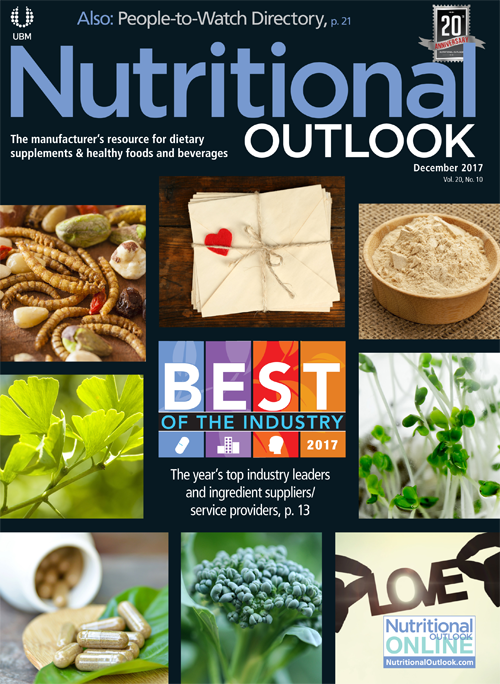Nutritional Outlook's 2017 Best of the Industry, Ingredient Supplier/Service Provider: Brassica Protection Products
Putting commercial glucoraphanin on the map.
Photo © Shutterstock.com/An Nguyen

Tony Talalay never expected to join the family business. But when he got a call from his father-the esteemed Paul Talalay, MD, professor in the department of pharmacology and molecular sciences at Johns Hopkins Medicine; pioneering cancer chemoprotection researcher-Talalay the younger was given an offer he couldn’t refuse.
Not long before, his father had published foundational research with Jed W. Fahey, ScD, MS, on the capacity of a phytochemical (i.e., glucoraphanin, [GR]) found in Brassica vegetables to trigger the phase-2 detoxification enzyme system that boosts levels of protective compounds in cells. When Drs. Talalay and Fahey realized that by fine-tuning the seed supply, they could grow broccoli sprouts “with high levels of this compound as a very consistent delivery system,” Talalay explains, they knew they had a viable business idea on their hands.
Talalay, whose background is in grocery and consumer marketing, was working at a San Francisco ad agency at the time. “Maybe you can help us figure out how to get some money for our research. You went to business school. Why don’t you write me a business plan?” Talalay recalls his father saying.
Thus, the seed of Brassica Protection Products (Baltimore) was planted, and 20 years later, Tony is its CEO, Dr. Talalay is still at Johns Hopkins, and the company has transitioned from supplying GR-rich fresh sprouts at retail to extracting GR and marketing it as TrueBroc, an ingredient for health-and-wellness and functional food brands.
The company basically put commercial GR extracts on the map. “We were probably the first to market a vegetable with a specific amount of a phytochemical in it,” Talalay says of the sprouts, and of the company’s move toward shelf-stable extracts. He muses, “We harnessed nature to produce something that we know is good for people.”
Their process is targeted and unique. “We grow a very specific type of broccoli seed in fields,” Talalay explains, which was developed using conventional breeding. Following harvest, the company uses a water-based extraction process. “By controlling all those elements,” Talalay says, “we can say that this gram of off-white powder that is TrueBroc came from this field and has this much GR content and so forth.”
Drs. Talalay and Fahey didn’t “discover a function of nature,” Talalay says, “but they did identify and quantify it...we spend an enormous amount of time testing to ensure that we’re delivering valuable compounds.”
No wonder the American Botanical Council (Austin, TX) gave Brassica its 2016 Varro E. Tyler award. Its anniversary year also saw Brassica’s entry into the Council for Responsible Nutrition (Washington, DC), the approval of TrueBroc as a novel food in China, and continued buzz about GR-fortified Brassica Coffee (with 15 mg of GR per K-Cup) which the company launched in 2016.
Future initiatives are planned in three areas, Talalay says. The first is continuously improving its signature product vis-Ã -vis GR concentration. “That involves growing better plants,” he notes, which they aim to do using conventional breeding.” (Read: no GMOs.)
They also hope to introduce a stabilized myrosinase with standardized activity that they can pair with the GR extract. And, they’re conducting clinical “three-arm studies” to demonstrate how combinations of TrueBroc with other bioactives can yield synergistic health benefits.
Another critical task is to spread the word about GR, which Talalay feels should attract as much attention as higher-profile ingredients like polyphenols, omega-3s, lycopene, and lutein.
In light of it all, Dad must be proud. Says Talalay, “We’ve done something that I don’t think he thought we could do, which is get this out to the public. I feel a huge responsibility to the family, to Johns Hopkins, and to him that whatever we do is of the highest possible quality.”
Other 2017 winners:
Nutritional Outlook's 2017 Best of the Industry, Ingredient Supplier/Service Provider: Lycored

Prinova acquires Aplinova to further increase its footprint in Latin America
April 7th 2025Prinova has recently announced the acquisition of Brazilian ingredients distributor Aplinova, which is a provider of specialty ingredients for a range of market segments that include food, beverage, supplements, and personal care.





















